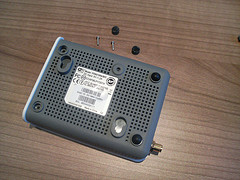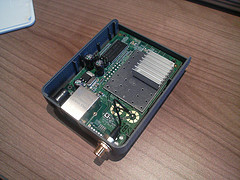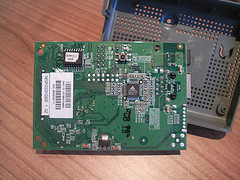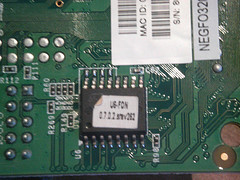You probably remember the post I made regarding FON’s figures, and how much I thought they differed from reality. It got quite a lot of attention, particularly from detractors, and from Martin Varsavsky himself. Many comments were posted on my blog and some others, which pointed towards the fact that I am involved in a startup which supposedly is a clone of FON, and thus I was biased and in no position to comment on FON. To cut a long story short, Martin posted a rather vicious personal attack on his blog, which I answered, he counter-commented, to which I again answered, but he never conceded a bit.
During my investigations that led to the statistics post, I also discovered a serious flaw in the maps management system, which would allow anyone to re-position any FON hotspot and change its address without first logging into the user area.
All that was required was the node’s ID and the hotspot owner’s user ID, both easily obtainable from the public queries that maps.fon.com launches against the database where hotspot data is held, and which I used to gather the statistics. For a determined attacker, it would have been very easy to place every single FON hotspot right in the middle of 1600 Pennsylvania Avenue, Washington DC.
I could have very easily posted about this, but I refrained from doing so for a reason – while I do not work full-time in the IT security industry, I have done quite a bit of consultancy work in the past, related to IT security, particularly in the wireless field. This means that I am fully aware of the industry-approved vulnerability disclosure procedure, which can be explained simply as:
- Document the vulnerability, and inform the company about the fact that you have found it.
- Wait for an initial response, establish contact points, and work a schedule for fixing the issue.
- Work with the company to help them solve the issue.
- Once the issue has been fixed, make a public disclosure on both sides about the vulnerability, giving credit to the person or company that discovered it.
You can find more references to this policy at Microsoft’s Security Response Center, here and here. A PDF from oisafety.org also describes this process in detail. A perfect example on how not to do things is the recent disclosure of a code injection vulnerability, which allowed manipulation of FON’s routers without even having to open them – even though their points are valid, they should have given FON the chance to fix the problem before going public.
In this case, I contacted FON’s support email first September 27th, and received a response on the 29th. This was really generic, only wanting to know about the details, and not acknowledging the normal procedure as I have explained above. On October 2nd, I emailed them again, asking to confirm that they understood the procedure, and on the 3rd they replied that they agreed on following the procedure.
I started compiling the information I had into a working document, but after becoming so frustrated at the attacks received as a result on my post about the statistics, the decision was to simply let the issue go, forget about FON, and concentrate on my own project. A couple of days ago, browsing around for stuff to clean up on the laptop, I came across the half-written report, and decided to finish it and send it to FON support, with CC to Martin, just to close the case. I received a reply today that they have in fact fixed the vulnerability, with a short ‘thanks’ (actually, quoting his email in full: “thanks Mike, i understand its been fixed”) from Martin.
The public acknowledgement of the discovery posted by FON is found in this forum post. Only in the English forums, by a user created apparently for this particular purpose, as this is his first post ever, where it is not likely to draw much attention. This would be fine by me, had not there been the precedent of Martin’s fierce replies to my statistics post, followed by countless attacks by FON’s followers, including an unfortunate incident better left forgotten. What I really cannot understand is that, when I criticize FON, I get such a huge public lashing, whereas when I help them out, I get a three-line remark in a forum where it will go mostly unnoticed. The end result may well be that other vulnerabilities, and it is likely they exist, go unreported.
Whatever the case, this should show those who accused me of unfair, biased attacks on FON that I really just call the shots as I see them, when I smell bullshit, I will point to it, when I see a hole, I will help them fix it – again, IMHO, blogging is not about being or not biased, it is about being ethical and maintaining a set of standards. In my view, it should also prompt Martin to write an apology, but I am not holding my breath. Not that I care much either, what is most important is my work; this is my blog, where I spend part of my spare time, which is not actually that much.







